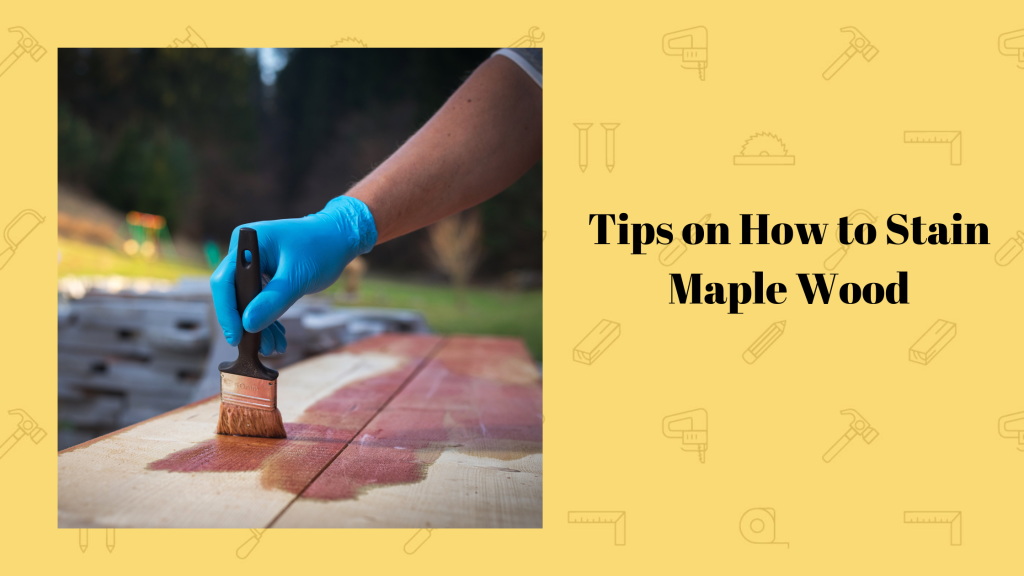How do you perfect your use of liquid sandpaper for your projects? As it turns out, there are a few tricks to do just that!
In my 15+ year career as a woodworker, I’ve had to apply paint, primer, and finish during several projects, whether I was sandblasting wood, building cabinets, or installing shelving.
On the foundation of this experience, I’ve learned a few things about liquid sandpaper (sometimes called liquid deglosser), and I aim to show you how to master its use with 9 simple tricks!
What Is Liquid Sandpaper?
Before we can get started using liquid sandpaper, let’s quickly cover what it is (and isn’t!) used for.
While different liquid-form sandpaper products consist of different chemical formulas, its main function is always the same: To soften a wood surface so that you can easily apply a new coat of paint or finish.
This function has the primary advantage of reduced labor.
With ordinary sandpaper, you have to vigorously wipe every part of the surface manually, while the liquid form is more effortlessly applied
On the other hand, since it lacks the solidity or roughness of conventional sandpaper, liquid sandpaper should not be used to smooth out scratched wood or remove coloring.

9 Key Tips for Using Liquid Sandpaper
Now that we know the basics of this deglosser, let’s run through 9 helpful guidelines for how to use liquid sandpaper safely and effectively:
1. Choose the Right Product
Not all deglosser products are of equal quality; some will give you stunning and impressive results for your finish, and others…not so much!
When selecting a liquid sandpaper option, I recommend looking at a few broad factors:
- Price. Though liquid variants of sandpaper are all going to be generally more expensive than ordinary sandpaper, some choices can be found at lower, more affordable price points for low-budget woodworking.
- Formula. The chemicals used in liquid sandpaper formulas can be hazardous (I’ll cover that more closely in the safety section!), so it’s always a good idea to know what kind of ingredients you’re working with.
- Project timeline. If you’re operating on a more unforgiving time crunch, then fast-acting deglossers are likely your best bet since they minimize time spent waiting for the surface to soften.
One choice I’d recommend considering is Klean Strip Liquid Sandpaper, which has the added benefit of not requiring rinsing before applying a paint or finish (meaning, you can skip step 7 on my list if you use this one.)

2. Establish an Effective Workspace
Prior to applying the sandpaper, it’s essential to choose a workspace that won’t suffer tremendously if it gets exposed to water (or worse, paint or finish.)
For most of my deglossing projects, I’ve opted to use my garage as my workspace. There’s a lower likelihood of fragile or valuable objects being damaged, and, with the door open, it’s quite easy to ventilate.
I’ve also found that I can keep potentially vulnerable areas extra-protected by using tape or drop cloths to cover them.
3. Take Safety Precautions
One unfortunate disadvantage that liquid sandpaper poses is its fumes.
Because these products contain potentially hazardous chemicals, it’s vital to keep a well-ventilated workspace to prevent inhalation of the fumes.
To our collective relief, this is pretty simple and not a huge obstacle to overcome!
Ventilating the area can be as simple as keeping doors or windows open and, for extra defense against fumes, you can also wear a respirator while working.
4. Clean the Area
The last step before applying the sandpaper is to clean the surface you’ll be deglossing.
In most cases, I’ve experienced good results just using a basic soap and water mix to wipe the area down.
However, for stubborn surfaces with a lot of grease and grunge built up, you might need a more powerful approach. Luckily, something like a TSP cleaner will almost always be more than enough to do the trick.

5. Spread the Liquid Sandpaper
Now that the prep work is done, the work becomes a simple matter of applying the liquid sandpaper. Typically, this means using a rag or paintbrush and steadily spreading the mix along the surface.
For indentions and crevices, I usually use a small paintbrush and carefully rub the product over the area.
This helps ensure every part of the surface is covered and makes applying the paint or finish afterwards a whole lot easier!
6. Wait for the Surface to Soften
Here comes the boring part: Waiting.
The deglosser needs time to work on the lumber and soften it up before you can wipe down the surface again.
How long this waiting period lasts depends on the product.
Based on the liquid sandpaper options I’ve used, I’d say you should be prepared to wait anywhere from 10 minutes to over 2 hours.
7. Wipe the Surface
Once the waiting period is over, you can use a new rag to wipe down the wood and prepare the surface for a new coat of paint or wood finish.
Some deglossers call for a dry rag, while others recommend a wet one, so it’s important to read the label.
As with my 4th step, I’d suggest using a small brush to rinse the more difficult-to-reach areas.

8. Apply New Paint or Finish
If you have the liquid sandpaper thoroughly removed from the wood, you can add the new coat!
To apply the coat, simply use a fresh brush and spread the product across the surface.
While the paint or wood finish product you use for this stage will obviously come down to project specifications, I’d recommend using the Retique It Countertop Kit, if appropriate.
This liquid wood paint comes with advantages that include an authentic look and texture, ease of application, and safe ingredients.

9. Clean the Workspace and Dispose of Materials
Lastly, you can gather up all your materials and clean or dispose of the used brushes, rags, and product containers.
During this step, I also check the product label, as these often include detailed instructions for safe disposal or cleaning.
Conclusion
And that’s a wrap! Let me know if you enjoyed this tutorial, or have any lingering questions or concerns, in the comments.
I believe liquid deglossers are a highly useful and convenient product to include in any woodworker’s toolkit. But, the product is only as effective as its user, so it’s essential to know the proper steps and guidelines for using liquid sandpaper.
*This post may contain affiliate links. Please see my disclosure to learn more.



